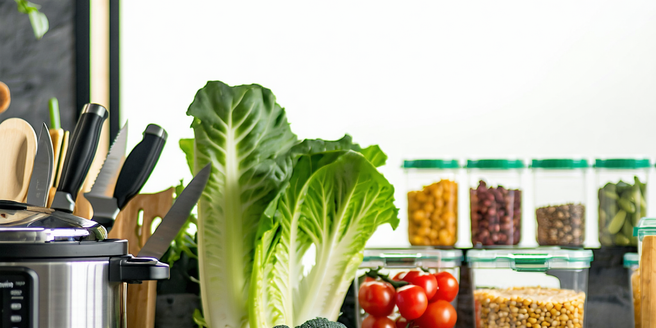
Understanding the Basics of Meal Prep
Meal prep is an essential technique for maintaining a healthy diet and saving time during the busy workweek. It involves planning, preparing, and portioning meals in advance. Start by selecting a day each week for planning and cooking. Choose recipes that you enjoy and align with your dietary needs. Once you’ve decided on meals, create a shopping list to ensure you have all necessary ingredients. When cooking, consider bulk prepping ingredients that can be used in multiple dishes, such as grains or roasted vegetables. Portion each meal in containers, ready to grab and go. This process reduces daily meal stress, helps manage portion sizes, and minimizes the chances of grabbing unhealthy options in a rush. By understanding the fundamentals, meal prep becomes a manageable and rewarding habit.
Choosing the Right Ingredients for Your Preferences
Selecting the right ingredients is crucial for successful meal prep. Begin by understanding your personal taste preferences and dietary needs, whether they involve prioritizing proteins, focusing on plant-based meals, or exploring global cuisines. Opt for seasonal fruits and vegetables, contributing to both freshness and cost-effectiveness. Incorporate whole grains, lean proteins, and a variety of textures for nutritional balance and satisfying meals. Be mindful of any food intolerances or allergies while creating your ingredient list. Exploring local farmers’ markets or specialty grocers can inspire and introduce you to new ingredients that enhance your meal prep repertoire. Tailoring your ingredient choices ensures meals are not only healthy but also enjoyable, reducing the likelihood of waste and promoting dietary adherence.
Time-Saving Kitchen Tools Every Foodie Needs
Equipping your kitchen with the right tools can significantly enhance your meal prep efficiency. Invest in quality knives for quick and safe chopping. A slow cooker or Instant Pot can be a game-changer, allowing you to prepare meals passively while you handle other tasks. Sheet pans are excellent for roasting a variety of ingredients simultaneously. Consider a food processor for speedy vegetable preparation and a well-sized cutting board to handle bulk items. Measuring cups, spoons, and a digital scale ensure accuracy in recipes, which is crucial for meal prep personalization. Silicone spatulas, storage containers, and labels ease the transition from cooking to storage, keeping meals organized. These tools streamline prep time and foster a seamless, productive kitchen experience.
Recipes That Elevate Your Meal Prep Game
Elevating your meal prep game involves experimenting with diverse recipes that go beyond the ordinary. Try incorporating global flavors into your meal rotation by creating dishes like Thai curry, Mexican quinoa bowls, or Italian pasta salads. Don’t shy away from trying new cooking methods such as grilling, broiling, or steaming to enhance the flavor profiles. Include versatile sauces and dressings that can transform a simple dish into something special. Experiment with different herbs and spices to develop unique flavor combinations. Quick pickling vegetables or preparing home-made marinades can add exciting elements to your meals. By continuously expanding your culinary repertoire, you’ll prevent palate fatigue and remain motivated in your meal prep journey.
Storage Solutions to Keep Your Meals Fresh
Proper storage is key to maintaining the freshness and quality of your prepped meals. Invest in high-quality, airtight containers that come in various sizes to accommodate different types of meals and portions. Glass containers are ideal as they preserve flavors without absorbing odors and are microwave-safe. Utilize freezer-safe options to extend the shelf life of batches that can’t be consumed immediately. Label each container with the date and meal type to avoid confusion. Organize your refrigerator and pantry efficiently to maximize space and ensure that meals are easy to access. Rotating meals based on expiry dates prevents waste and ensures optimal freshness. By following these storage strategies, you can enjoy delicious, ready-to-eat meals throughout the week.
